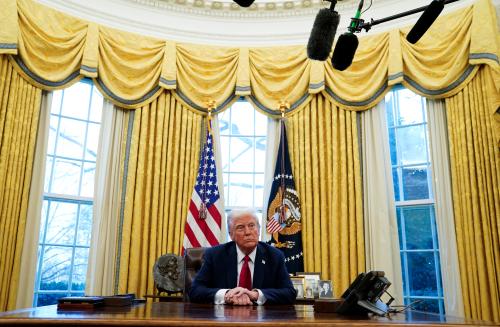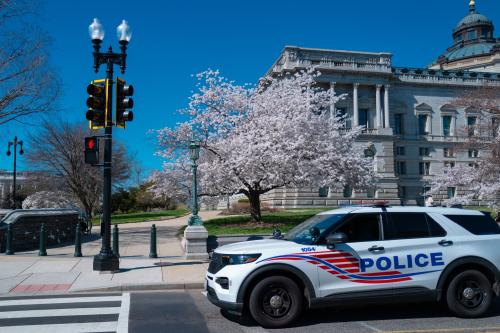2012 has been a rough year for India’s government. It began with a series of protests led by an anti-corruption activist, who went on hunger strikes to protest foot-dragging by the government in passing a new anti-corruption law. Then, as a reminder of one of the worst scandals in recent memory, the Indian Supreme Court revoked all broadband licenses granted through what turned out to be illegal spectrum auctions. On the economic front, India has maintained stubbornly high inflation and the Indian government lowered the economy’s growth forecast for the current financial year to 5.7 percent, the lowest in a decade.
As if these events were not bad enough, just in time to ring out the old year, major protests have broken out across the major cities in India over the brutal rape of a 23-year-old medical student in New Delhi. In Delhi’s famous Raisina Hill area where the parliament, presidential palace and several ministries are located, thousands of demonstrators clashed with riot police for several days before the area was barricaded. Those who have witnessed the protests—including the authors of this article—have noticed that the protesters’ anger is directed against the country’s police and politicians as much as it is against the rapists. The crowds also bear more than a passing resemblance to those participating in the Arab Spring protests in early 2011, being composed predominantly of urban youth, mobilized through social media, whose collective anger is being vented at various targets all at once.
In fact, one can think of the protests as motivated by a confluence of three major stresses facing contemporary India: crime, government ineffectiveness and gender inequity.
To begin with, India’s police remain unable to provide basic policing services, even after reforms put in place following the terrorist attacks in Mumbai in 2008. Delhi, for example, is home to one of the largest metropolitan police forces in the world with some 84,000 officers. But only one-third are involved in any kind of actual “policing” at any given time, while the rest provide protection services to various politicians, senior bureaucrats, diplomats and other elites. According to the Times of India there is one officer for every 200 citizens and about 20 officers for every VIP. Many of those who do perform police duties can be found shaking down motorists, participating in protection rackets and simply looking the other way as crimes take place. The victim herself was allegedly being assaulted on a bus traveling along a major thoroughfare that crossed police checkpoints. Many police departments around the country lack basic crime-fighting resources such as forensic facilities or specialized crime units. Police are provided with little training on securing crime scenes, gathering evidence, or conducting criminal investigations. There are no nationwide standards for training, competence or accountability.
And then there is the perception of a corrupt, paternalistic governing class that seems to have been left behind as rapid changes have swept other parts of Indian society. As India’s economy has acquired a global reputation as an IT services hub, government offices are still buried under piles of handwritten records. Even as India’s businesspeople—from its CEOs to its small shopkeepers to its millions of rural and urban micro-entrepreneurs—have innovated and discovered new markets, their government still operates as it has for decades. And when young protesters ask for improvements in policing or changes in government behavior, politicians warn of chaos and disorder, or simply keep silent. It took the prime minister one week to comment on the recent demonstrations. The home minister likened the protesters to the Maoist insurgents that the government is currently fighting. And the Delhi police commissioner, when asked what is being done about improving ties with the public, responded by mentioning “vocational work” for the poor. “Young India, old politicians,” is how author Gurcharan Das once described this gulf between the aspirations of its citizens and the incapacity of its politicians to deliver.
Finally, it is no secret that India remains a difficult country for women despite major advances by women in professional life. Basic indicators—female literacy, female labor force participation, female life expectancy and maternal mortality—are low relative to South Asian neighbors (Bangladesh and Sri Lanka) and even when compared to poorer countries such as Laos, Yemen and many countries in sub-Saharan Africa. The male-female ratio, a statistic that says much about the status of women in a society, remains one of the lowest in the world with only 940 women per thousand men. These “missing women” are largely victims of sex-selective abortion, poor investments in health and education for girls, and their general neglect. Delhi and neighboring Haryana state have sex-ratios below the national average: 866 women and 830 women for every thousand men, respectively. The surplus of single men, the prevalence of widespread youth unemployment and the persistence of traditional marriage practices have combined to produce serious social consequences, including violence against women.
As for the incident that sparked the current protests, the official statistics are even grimmer: almost 25,000 rapes were reported to police in India in 2011, a 25 percent increase over the previous year. According to local reporters, this is a fraction of the over half-million rapes that are actually committed each year—almost one every minute. With less than 7 percent of the police officers being women, the police are widely accused of gender insensitivity and apathy to crimes against women. In 2010, as many as 414 rape cases were reported in Delhi, the highest among 35 major cities in the country. According to the National Crime Records Bureau, the conviction rate in these rape cases was less than 35 percent. An investigative report by NDTV and Tehelka Magazine exposed how male police blame women for violence and harassment against them; remarked a station commander of a Delhi precinct: “if girls don’t stay within their boundaries, if they don’t wear appropriate clothes, [this] attraction makes men aggressive.” A senior police officer from the same precinct later revealed the identity of a minor who was gang-raped in a moving car, criticizing her “moral character” at a press conference.
The public debate in India continues. Senior members of the Delhi and national governments have broken their silence to acknowledge the magnitude of public discontent. Some short-term measures have been proposed: a new helpline for women, a promise to prosecute rape cases quickly, a strengthening of punishment against rape and other crimes against women, etc. A special session of parliament has been convened to address short- and long-term solutions to these issues. It remains clear however, is that solutions to the protesters’ concerns are neither quick nor simple. An overhaul of law enforcement systems is required, with investments in recruitment, organization, training, and new systems of accountability and oversight. Laws against sexual crimes must be strengthened. And most importantly, greater dialogue about India’s patriarchal norms must continue.
As for the other societal strains that moved the protesters, organized collective action will be needed long after the street demonstrations have died down, as will the sustained mobilization of women and young people. Women in India have been slow to organize around crosscutting issues. In the years since independence, the Indian women’s movement has been largely eclipsed by other divisions along the lines of class, caste, tribe, language, religion and political affiliation. And an irony that has not been lost on some commentators is that the crowds protesting in the cities—young, middle- or upper-middle class—are not generally dependable voters in Indian elections.
Perhaps the recent protests are a turning point, a sign of growing awareness that the problems of policing, bad governance and crimes against women have been neglected by the normal political process, and that they have implications for managing social tensions as well as for economic development. Given that two-thirds of India is today below the age of 35, the potential for the voice of the youth to shape national policy is powerful, if still unfulfilled. As the New Year approaches, Indian politicians would be well-advised to remind themselves of the lessons of the Arab Spring: young people may not matter in politics… until they do.
The Brookings Institution is committed to quality, independence, and impact.
We are supported by a diverse array of funders. In line with our values and policies, each Brookings publication represents the sole views of its author(s).



Commentary
India’s Protests as a Social “Stress Test”
December 28, 2012